© 2025 MJH Life Sciences™ , Patient Care Online – Primary Care News and Clinical Resources. All rights reserved.
Depression Treatment in Primary Care Gets a Lift
Highlights from a recent evidence-based review offer guidance on feasible depression treatments in primary care.

For part 1 of this series, which highlights the authors’ recommendations for screening and diagnosis of depression in primary care, see Depression Presents Diagnostic Challenges in Primary Care.
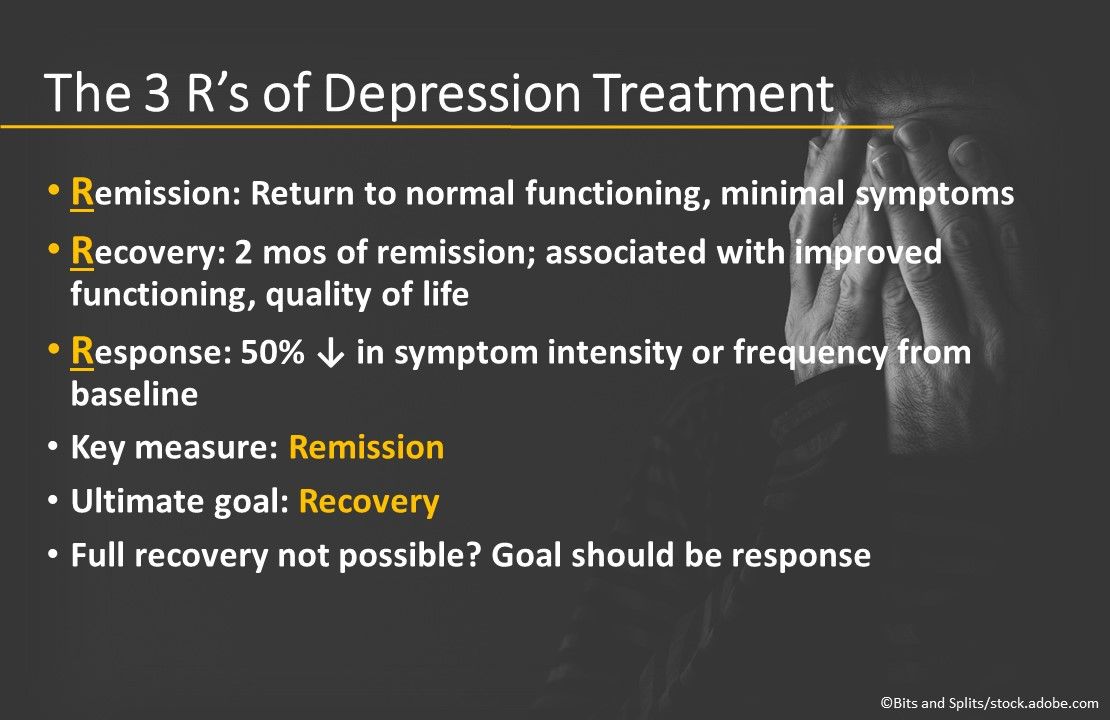
The 3 R’s of depression treatment. Recovery, remission, and response are the main goals of treatment for depression in primary care. Remission-a return to normal functioning and minimal symptoms-is the key measure. Recovery, defined as 2 months of remission and associated with improved functioning and quality of life, is the ultimate goal. When full recovery is not possible, the goal should be response-a 50% reduction in symptom intensity or frequency from baseline.
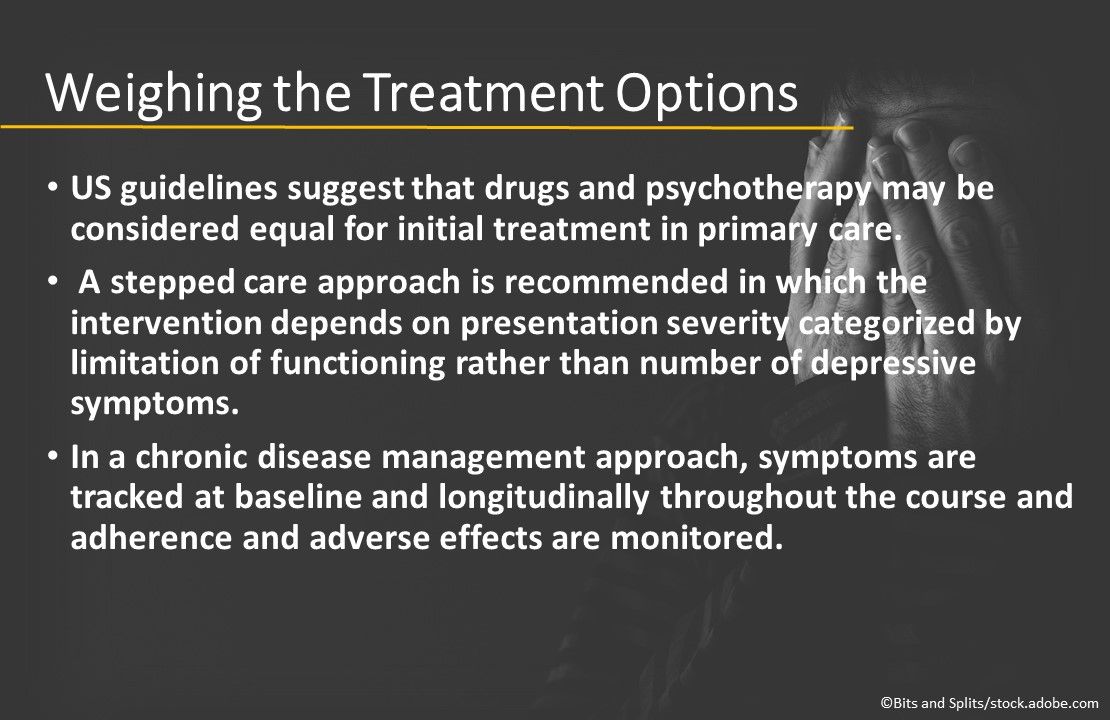
Weighing the treatment options. Different guidelines have varying recommendations for initial treatment of depression. US guidelines suggest that drugs and psychotherapy may be considered equal for initial treatment in primary care. Which approach do the guidelines agree on? A stepped care approach in which the intervention depends on presentation severity (categorized by a subjective assessment of limitation of functioning, not number of depressive symptoms). PCPs are advised to adopt a chronic disease management approach in which symptoms are tracked at baseline and longitudinally throughout the course of treatment and adherence and adverse effects are monitored.
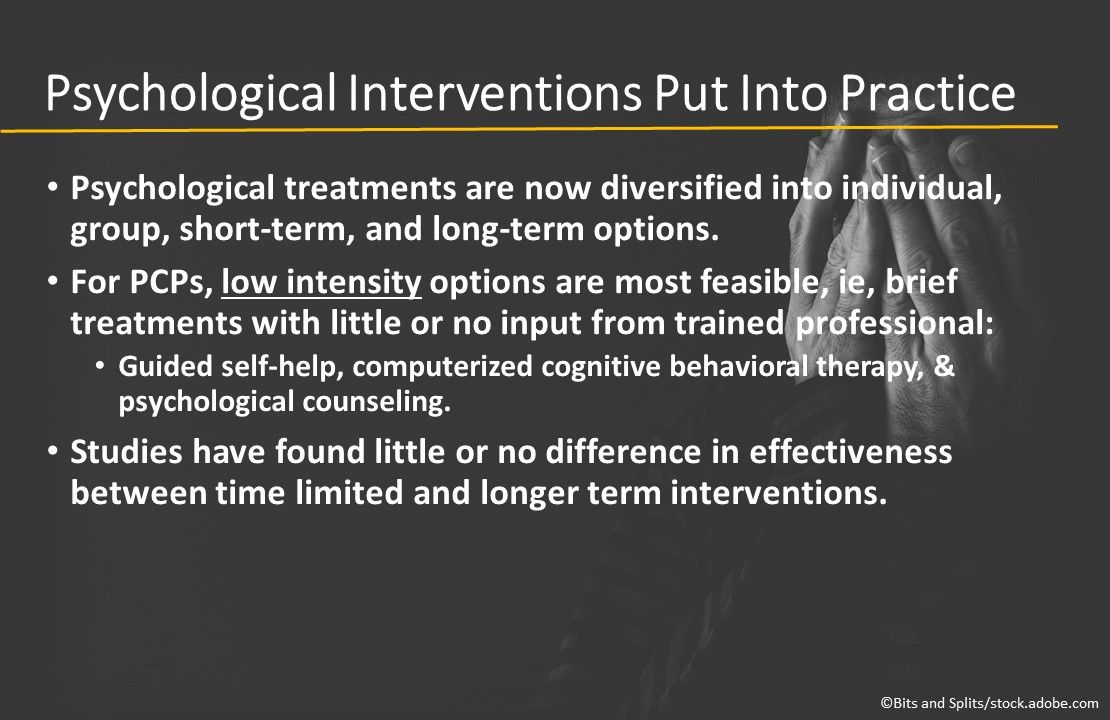
Psychological interventions put into practice. Psychological treatments are diversifying into individual, group, short-term, and long-term options. Those most feasible for PCPs include brief, low-intensity treatments with little or no input from a trained professional: guided self-help, computerized cognitive behavioral therapy, and psychological counseling. High-intensity treatments delivered by a qualified psychotherapist include cognitive behavioral therapy, interpersonal therapy, and behavioral activation. Little or no difference in effectiveness has been found between time limited and longer term interventions.
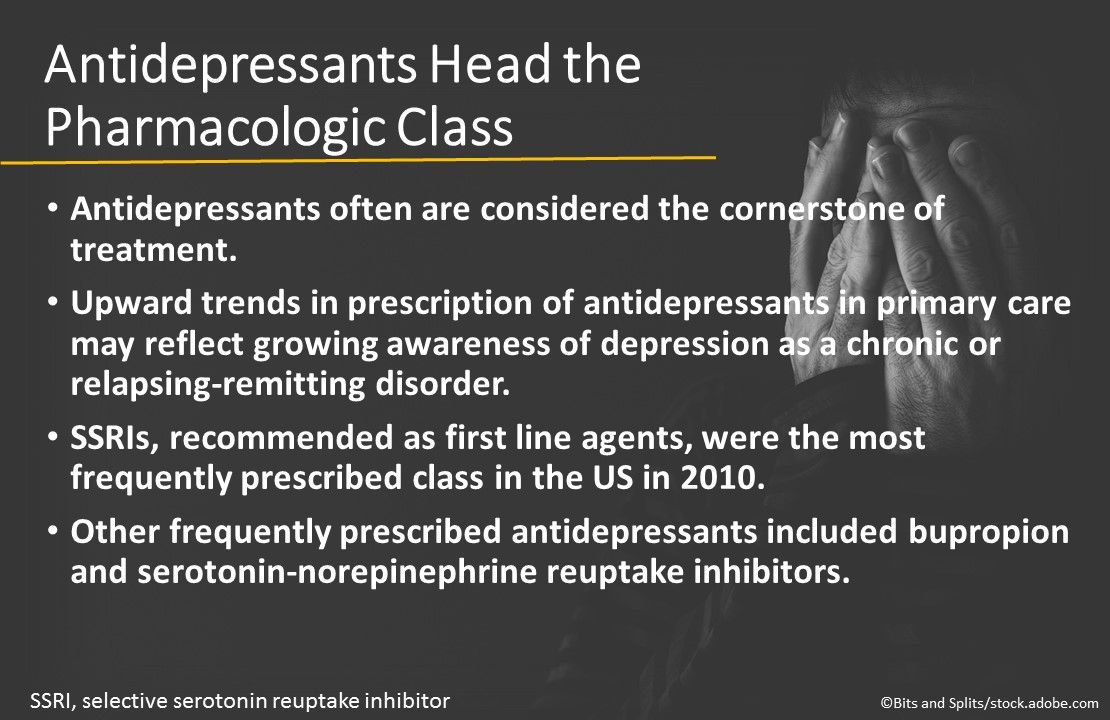
Antidepressants head the pharmacological class. Antidepressants often are considered the cornerstone of treatment. Upward trends in antidepressant prescription in primary care may reflect growing awareness of depression as a chronic or relapsing-remitting disorder. SSRIs-recommended as first line agents-were the most frequently prescribed class of antidepressants in the US in 2010, followed by bupropion and serotonin-norepinephrine reuptake inhibitors.
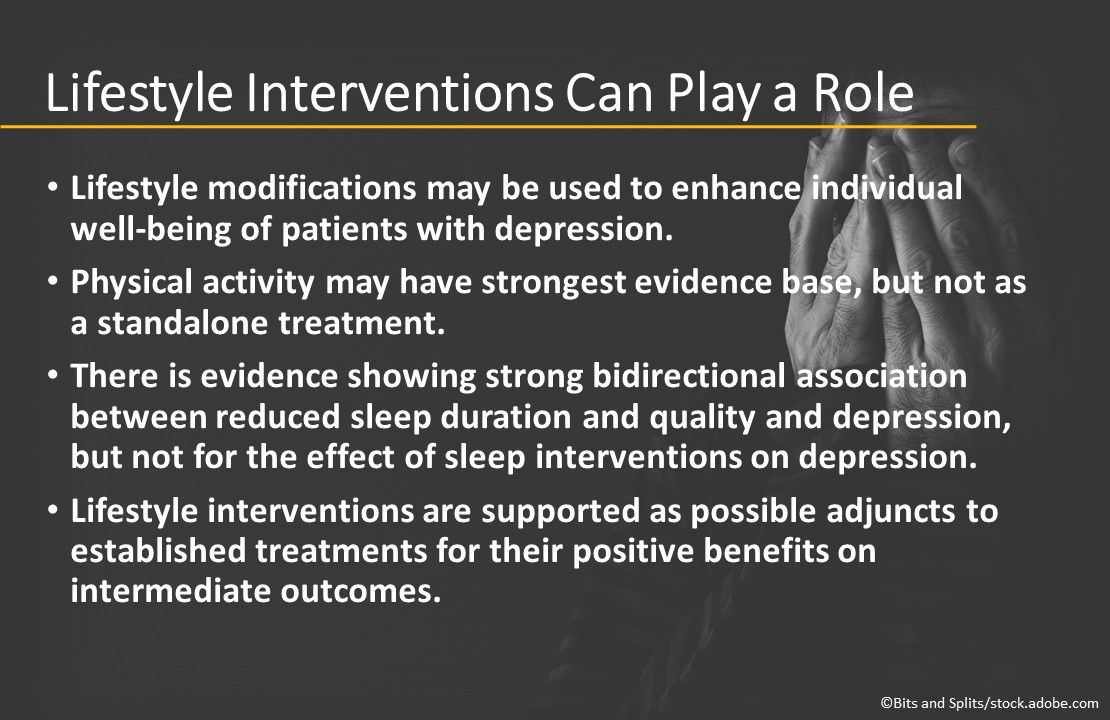
Lifestyle interventions can play a role. A PCP may use lifestyle modifications to enhance patients’ well-being. Physical activity may have the strongest evidence base, but not as a standalone treatment. Evidence has been found for a strong bidirectional association between reduced sleep duration and quality and depression but not for the effect of sleep interventions on depression. Lifestyle interventions are supported as possible adjuncts to established treatments for their positive benefits on intermediate outcomes, such as reducing loneliness and improving self-esteem.
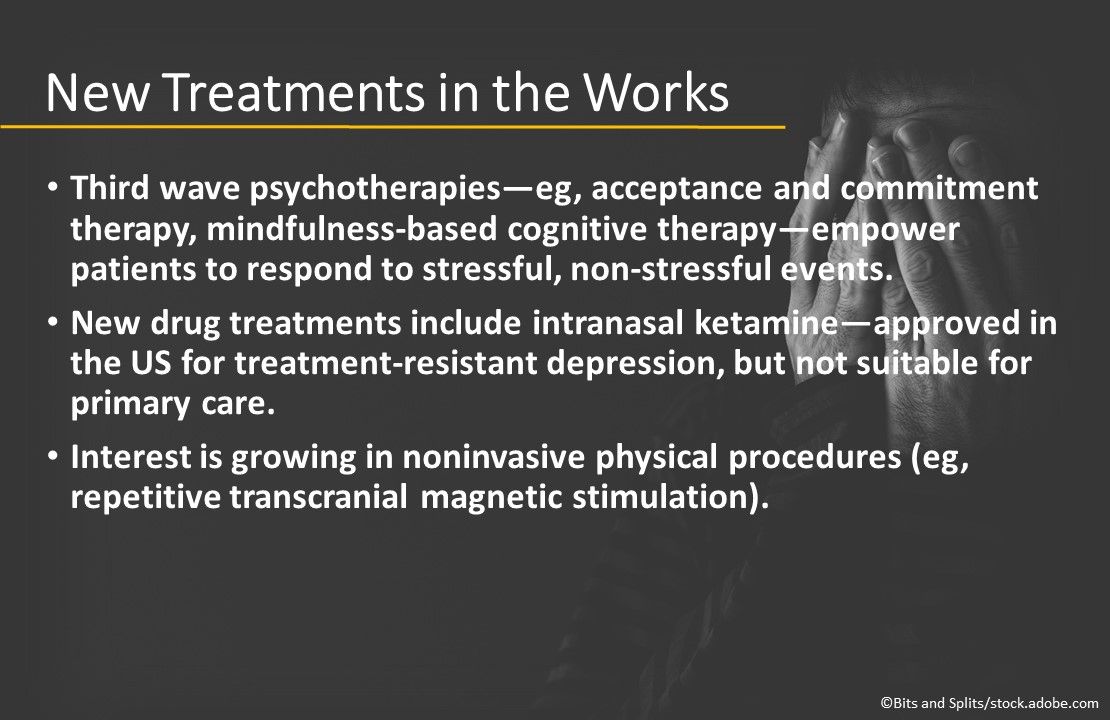
New and emerging interventions are being developed. Third wave psychotherapies, including acceptance and commitment therapy as well as mindfulness based cognitive therapy, empower patients to respond to stressful and non-stressful events. New drug treatments include intranasal ketamine-approved in the US for treatment-resistant depression but not suitable for primary care. And interest is growing in noninvasive physical procedures (eg, repetitive transcranial magnetic stimulation). Most of the interventions are still used mainly in experimental or specialist settings.
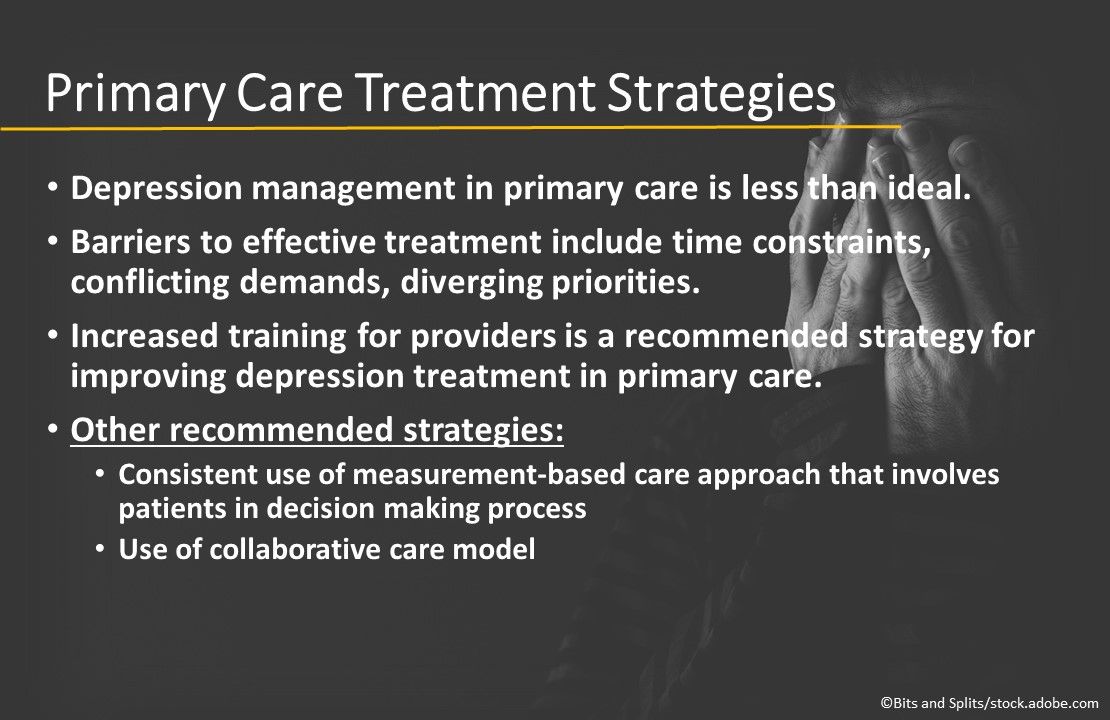
Primary care treatment strategies. Depression management in primary care is less than ideal-substantial clinical improvements at 12 months were seen in as few as 20%-40% of older adults prescribed treatment. Barriers to effective treatment include time constraints, conflicting demands, and diverging priorities. Recommended strategies to improve depression treatment in primary care include increased training for providers, consistent use of a measurement-based care approach that involves patients in the decision making process, and use of a collaborative care model.
Stay in touch with Patient Care® Online:
→Subscribe to ourNewsletter →Like us on Facebook →Follow us on Twitter →Write or Blog for Patient Care® Online→Follow us on LinkedIn
Earlier this year, researchers provided practical evidence-based guidance on diagnosis and treatment of major depressive disorder in primary care in a 2-part review published in the BMJ. In the first part, researchers outlined an approach to effective screening and diagnosis. The second part detailed their approach to treatment of depression in primary care, including recommendations for psychological, pharmacological, and lifestyle interventions and organizational strategies.For highlights of their approach and recommendations for depression treatment from part 2, scroll through the slides below.



